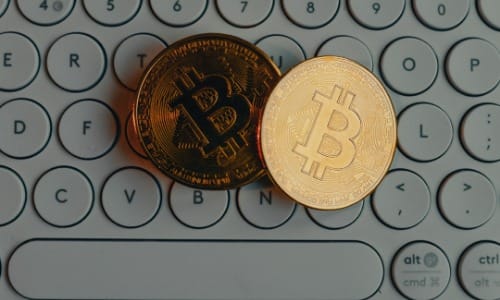In the dynamic world of cryptocurrency, Bitcoin (BTC) remains the undisputed king. Whether you’re a seasoned investor, a budding entrepreneur, or simply crypto-curious, there will come a time when you need to exchange BTC for another digital asset. Perhaps you want to diversify your portfolio, tap into the potential of an altcoin, or simply convert your crypto to a stablecoin to lock in gains.
However, the process of exchanging Bitcoin can seem daunting. With countless platforms, fluctuating fees, and security concerns, finding the right path is crucial. This guide will walk you through everything you need to know to execute a secure, efficient, and cost-effective BTC exchange.
Why Would You Need to Exchange BTC?
Before diving into the “how,” let’s explore the “why.” The reasons for exchanging your Bitcoin are as varied as the crypto ecosystem itself:
Portfolio Diversification: Putting all your eggs in one basket is a risky strategy. Exchanging some BTC for Ethereum (ETH), Solana (SOL), or other promising altcoins can spread risk and increase potential opportunities.
Utilizing DeFi and dApps: Many decentralized finance (DeFi) protocols and applications are built on networks other than Bitcoin. To participate, you’ll likely need to exchange BTC for a native token like ETH, BNB, or MATIC.
Acquiring Stablecoins: In times of high market volatility, converting BTC into a stablecoin like USDT or USDC can protect your capital’s value, acting as a safe harbor without fully cashing out to fiat.
Making Payments: Some merchants and services accept specific cryptocurrencies but not Bitcoin. A quick exchange can facilitate these transactions.
Choosing the Right Platform for Your BTC Exchange
The most critical decision you’ll make is selecting where to conduct your swap. Broadly, you have two main types of services:
1. Centralized Exchanges (CEXs)
These are traditional platforms like Coinbase, Binance, and Kraken. You deposit your BTC, place an order on their internal marketplace, and the exchange facilitates the trade.
Pros: User-friendly, high liquidity, advanced trading features.
Cons: Require KYC/AML verification, you don’t hold your private keys during the process, and withdrawal fees can be high.
2. Decentralized Exchanges (DEXs) & Instant Swap Services
This is where the future of crypto trading is headed. Platforms like Uniswap are DEXs, while services known as aggregators simplify the process for users. A prime example of such a service is SwapSpace.
These platforms allow you to exchange BTC directly from your personal wallet without needing to create an account or surrender your private keys.
Pros: Enhanced privacy and security (non-custodial), no mandatory registration, often better rates due to aggregation.
Cons: Can be less intuitive for beginners, and you are solely responsible for the security of your funds.
(Image Suggestion: A split-screen graphic comparing a complex CEX trading interface on one side and a simple, clean instant swap interface on the other, highlighting the simplicity of the latter.)
[Image: A comparison between a complex trading interface and a simple swap service]
A Step-by-Step Guide to Exchanging Bitcoin
For entrepreneurs and investors who value speed, efficiency, and control, using an instant exchange aggregator is often the best choice. Here’s how a typical process works:
Step 1: Select Your Currencies
Start by choosing Bitcoin (BTC) as the currency you want to send and select the cryptocurrency you wish to receive (e.g., Ethereum, Monero, USDT).
Step 2: Enter the Amount
Input the amount of BTC you want to exchange. The platform will instantly display the estimated amount of the receiving currency you will get, including all fees.
Step 3: Compare Offers
This is the key advantage of aggregators. The service scans dozens of different exchange platforms to present you with a list of the best available rates. You can compare the final receive amount, transaction speed, and provider rating side-by-side.
Step 4: Provide Your Receiving Wallet Address
This is a crucial step. You must provide the correct wallet address for the cryptocurrency you are receiving. Double-check this address, as transactions on the blockchain are irreversible.
Step 5: Send Your Bitcoin
The platform will generate a unique deposit address for you to send your BTC. Once the transaction is confirmed on the blockchain, the exchange process begins.
Step 6: Receive Your Funds
After the network confirmations are complete, the exchanged coins will be sent directly to the receiving wallet address you provided in Step 4.
Why Consider an Aggregator for Your Next BTC Exchange?
For a hassle-free experience, a platform that aggregates rates from multiple providers is invaluable. If you’re looking for a service that simplifies this entire process, you can explore your options on a dedicated page like this one: here
Such platforms eliminate the need to manually check rates across multiple websites, saving you time and ensuring you get a competitive deal for your Bitcoin exchange. They are particularly useful for:
Finding the Best Rate: By comparing multiple sources in one place.
Convenience: Streamlining the entire process into a few simple clicks.
Flexibility: Offering a wide range of altcoins to exchange for.
Security Best Practices When You Exchange BTC
No matter which platform you choose, security should be your top priority.
Use a Secure Wallet: Always use a reputable, non-custodial wallet (like a hardware wallet) where you control the private keys.
Double-Check Addresses: Always verify the sending and receiving addresses. A single wrong character can lead to permanent loss of funds.
Beware of Phishing Scams: Ensure you are using the official website of the exchange service. Bookmark it to avoid fake lookalike sites.
Start Small: For your first transaction with a new service, test with a small amount to ensure everything works smoothly.
Exchanging Bitcoin doesn’t have to be complicated. By understanding your options, prioritizing security, and leveraging modern tools like instant exchange aggregators, you can navigate the crypto markets with confidence and agility. Make your next BTC exchange a seamless part of your entrepreneurial or investment strategy.
